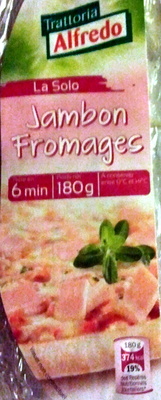Pizza jambon fromages - Trattoria Alfredo - 180 g
Ambiguous barcode: This product has a Restricted Circulation Number barcode for products within a company. This means that different producers and stores can use the same barcode for different products.
×
This product page is not complete. You can help to complete it by editing it and adding more data from the photos we have, or by taking more photos using the app for Android or iPhone/iPad. Thank you!
×
Barcode: 20165628
Common name: Pizza pâte fine garine de jambon cuit, d'emmental et de gouda
Quantity: 180 g
Packaging: Plastic, Protective gas
Brands: Trattoria Alfredo, Lidl
Categories: Meals, Pizzas pies and quiches, Pizzas, Oval pizzas
Labels, certifications, awards:
Green Dot
Stores: Lidl
Countries where sold: France










